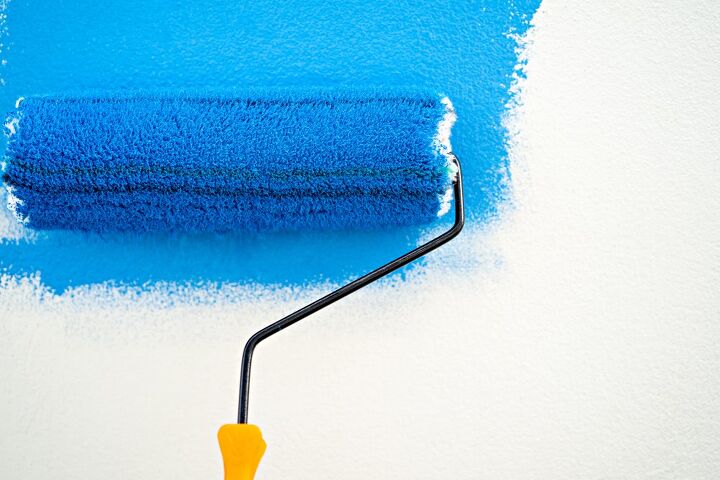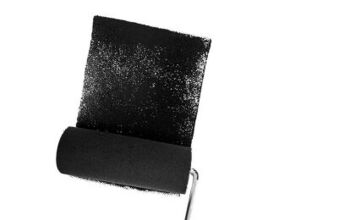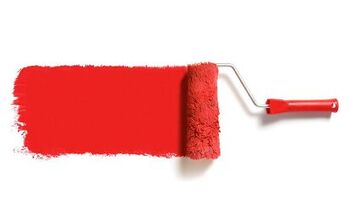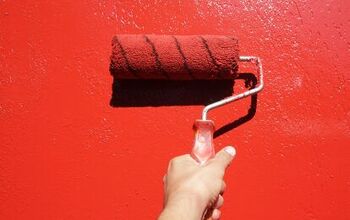What Is the Best Color Primer To Use For Blue Paint? (Find Out Now!)

Painting is an excellent, low-cost option if you want to update your home without bleeding your wallet dry. A fresh coat of paint gives your home an instant facelift, but only if you do the job right. To achieve a professional-looking paint job, it’s essential to do the necessary prep work, which often involves priming.
Some colors are easier to prime over than others, and dark or bright, vivid blues can be tough to hide. If planning to paint a light color or white over dark blue, use a white primer like KILZ Restoration Interior. However, a tinted or gray primer is best if painting a darker color over blue, like Zinsser Bullseye 1-2-3.
Countless options of primers line the shelves of home improvement and paint stores. This is because there are so many different factors to consider when you tackle a paint job. Therefore, ensure you take the necessary time to acquire the best primer for your needs.
Do You Need to Hire a Paint Contractor?
Get free, zero-commitment quotes from pro contractors near you.

The Benefits of Priming Before Painting
Priming before you paint ultimately saves you a lot of headaches and frustration. Although it adds an extra step to the process, it makes for a better paint job. This means you don’t have to worry about repainting for a while unless you want to change the color.
Here are some of the main benefits of priming before you paint:
- Priming increases the durability and lifespan of your paint job.
- Most primers dry quickly, so you won’t have to wait as long between coats as you would with paint.
- The appropriate primer helps hide the old paint color more efficiently than paint.
- Primer helps prevent peeling, cracking, fading, and other bothersome issues with your paint job.
- Applying primer helps block stains and seal the surface, keeping your new paint job looking fresh.
- Priming evens out the surface for your paint and increases adhesion. This is because primers typically have more resins than paint.
What Primer Is Best for Painting Over Blue Paint?
Dark blue walls can be especially tricky to paint over and achieve the desired color results. Luckily, using the right primer for the job can keep your paint job perfect.
Painting Light Colors Over Blue Paint
KILZ Restoration Interior Primer is a great choice for priming dark blue walls to paint them a lighter color. It’s water-based but performs like oil and shellac primers, also providing ultimate stain blocking and sealing.
When painting over a dark color, it’s best to use two coats of primer, especially if applying a lighter color. Zinsser 1-2-3 Gray Primer also offers excellent coverage over dark paints and fantastic stain blocking, working with multiple surfaces. However, stick with a white primer if you plan to paint your new walls white or a very light color.
If you plan to paint a light color over a light-blue wall, KILZ Restoration or KILZ Multi-Purpose are good options. Tintable primers tinted the new color or paint-and-primer combos are also ideal choices for covering light-colored walls.
Painting Dark Colors Over Blue Paint
Whether your existing wall is light or dark blue, use a gray primer if you plan to apply a darker color. Another option is to get a tintable primer, tinted as close to your new color as possible.
The Zinsser 1-2-3 Primer is a good option for these applications as well. Using a gray or tintable primer provides a better base for darker colors than a white primer.
Can Paint/Primer Combos Work Over Blue Paint?
Although paint-and-primers in one offer excellent coverage and can save time, they might not be the best for covering dark blues. You can certainly use it, but it would be costlier since you’d likely need multiple coats.
Now, if painting over a light blue, especially if painting a darker color, paint-and-primer can be a real timesaver.
What Primer Is Best Underneath Blue Paint?
If you’re painting blue paint over a white or light-colored wall, the primer choice depends on the shade of blue. If using dark blue, it’s best to use a gray primer or tintable primer that’s close to your new color.
However, a white primer will work well if you’re painting a light shade of blue over a light-colored wall. KILZ Restoration or KILZ Multi-Purpose are both excellent options. For even better results, this would be an ideal situation for a paint-and-primer combo.
But, if you’re painting over a dark-colored wall, you’ll have some different choices. If you plan to paint a light shade of blue over a dark wall, go with a white primer. You will also need to apply two coats of primer to achieve the correct color results.
If you’re painting a dark blue over a dark wall, opt for a gray primer, or use a tinted primer. Make sure to tint it as close as possible to the new color.
Always Prep Before You Prime
Regardless of your primer, it’s vital to prepare the surface you’re painting. Remove chipped and peeling paint, sand the surface, and clean it thoroughly.
Some primers claim that no sanding or prep is necessary. In many cases, this is fine, like painted walls in good condition or certain furniture pieces.
But if you’re painting over rough, peeling surfaces, or overly smooth surfaces, it’s best to sand as needed.
Do You Need to Hire a Paint Contractor?
Get free, zero-commitment quotes from pro contractors near you.

Related Questions
How much does a professional painting service cost?
If you’d rather not roll up your sleeves and do the work, you can hire professional painters. However, the price you pay varies based on the room size, colors, and necessary coats. Also, the required prep work factors into the bottom line.For example, if your walls are in poor shape, stained, damaged, etc., they will require more prep work. If you’re applying lighter colors over dark, hard-to-cover shades, like red, the job will require more coats. However, in a nutshell, for a standard-sized room, about 10 x 12, you can expect to pay between $300 and $800. Larger rooms can cost around $1,200 to $1,500, while smaller rooms might be $200 to $500.Keep in mind; it’s not necessarily the room size but the surface area that the painters need to paint. So, you might have a large kitchen, but most walls are a backsplash or taken up with cabinets. Or, perhaps the room size is smaller than average, but you have very high ceilings and 10-foot-tall walls.Find a few painters based on recommendations and reviews and have them give you estimates. Go for at least three before you make your final decision.
How much does primer cost?
Depending on what size paint can you get and the type of primer, your cost for primer will vary. A decent-quality, white primer will cost about $15 for a gallon. Primers with more features, like mold resistance and higher quality, can cost closer to $25 to $40 per gallon.On average, it’s more cost-effective to get primer (and paint) in larger sizes if you know you’ll need it. For example, a quart of KILZ-2 All-Purpose, Interior/Exterior Primer with sealing and stain-blocking costs about $10 for a quart. However, a gallon (or 4 quarts) of the same paint costs about $19. If you have a big painting project ahead of you, for example, painting your whole house, consider larger buckets. For example, the KILZ-2 mentioned above costs about $86 for a 5-gallon bucket or roughly $46 for 3.5 gallons.
How long should you wait before going into a freshly painted room?
The usual rule of thumb is to wait about 24 hours, assuming the room is well-ventilated. However, always check the label on the paint can for recommended drying times. It’s also wise to wait for a more extended period for children’s rooms and nurseries. Also, using low VOC paints can ensure you have fewer fumes to deal with during and after your paint job.

Stacy Randall is a wife, mother, and freelance writer from NOLA that has always had a love for DIY projects, home organization, and making spaces beautiful. Together with her husband, she has been spending the last several years lovingly renovating her grandparent's former home, making it their own and learning a lot about life along the way.
More by Stacy Randall





















![Standard Dining Room Table Dimensions [for 4, 6, 8, 10 and 12 People]](https://cdn-fastly.upgradedhome.com/media/2023/07/31/9074335/standard-dining-room-table-dimensions-for-4-6-8-10-and-12-people.jpg?size=350x220)





